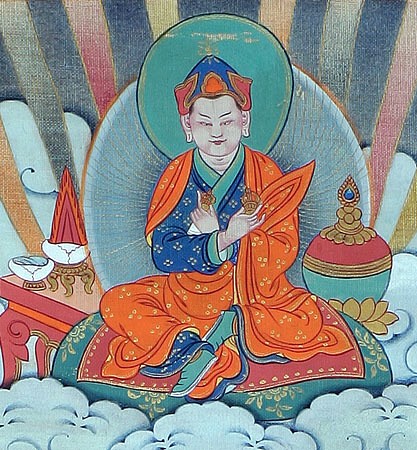Difference between revisions of "Humkara"
Jump to navigation
Jump to search
| Line 3: | Line 3: | ||
| − | '''[[Humkara]]''' (Skt. [[Hūṃkara]]; Tib. {{BigTibetan|[[ཧཱུྃ་ཀ་ར་]]}}, {{BigTibetan|[[ཧཱུྃ་མཛད་]]}}, [[Wyl.]] ''[[hUM ka ra]]'' or ''[[hUM mdzad]]'') — one of the [[eight vidyadharas]] of India; he received the [[Vishudda]] (Tib. [[Yangdak Heruka]]) tantra from the [[Kagyé]] cycle. | + | '''[[Humkara]]''' (Skt. [[Hūṃkara]]; Tib. {{BigTibetan|[[ཧཱུྃ་ཀ་ར་]]}}, {{BigTibetan|[[ཧཱུྃ་མཛད་]]}}, [[Wyl.]] ''[[hUM ka ra]]'' or ''[[hUM mdzad]]'') — one of the [[eight vidyadharas]] of [[India]]; he received the [[Vishudda]] (Tib. [[Yangdak Heruka]]) [[tantra]] from the [[Kagyé]] cycle. |
Latest revision as of 20:26, 1 April 2024
Humkara (Skt. Hūṃkara; Tib. ཧཱུྃ་ཀ་ར་, ཧཱུྃ་མཛད་, Wyl. hUM ka ra or hUM mdzad) — one of the eight vidyadharas of India; he received the Vishudda (Tib. Yangdak Heruka) tantra from the Kagyé cycle.
Further Reading
- Dudjom Rinpoche, The Nyingma School of Tibetan Buddhism, trans. and ed. Gyurme Dorje (Boston: Wisdom, 1991), pages 475-477.
